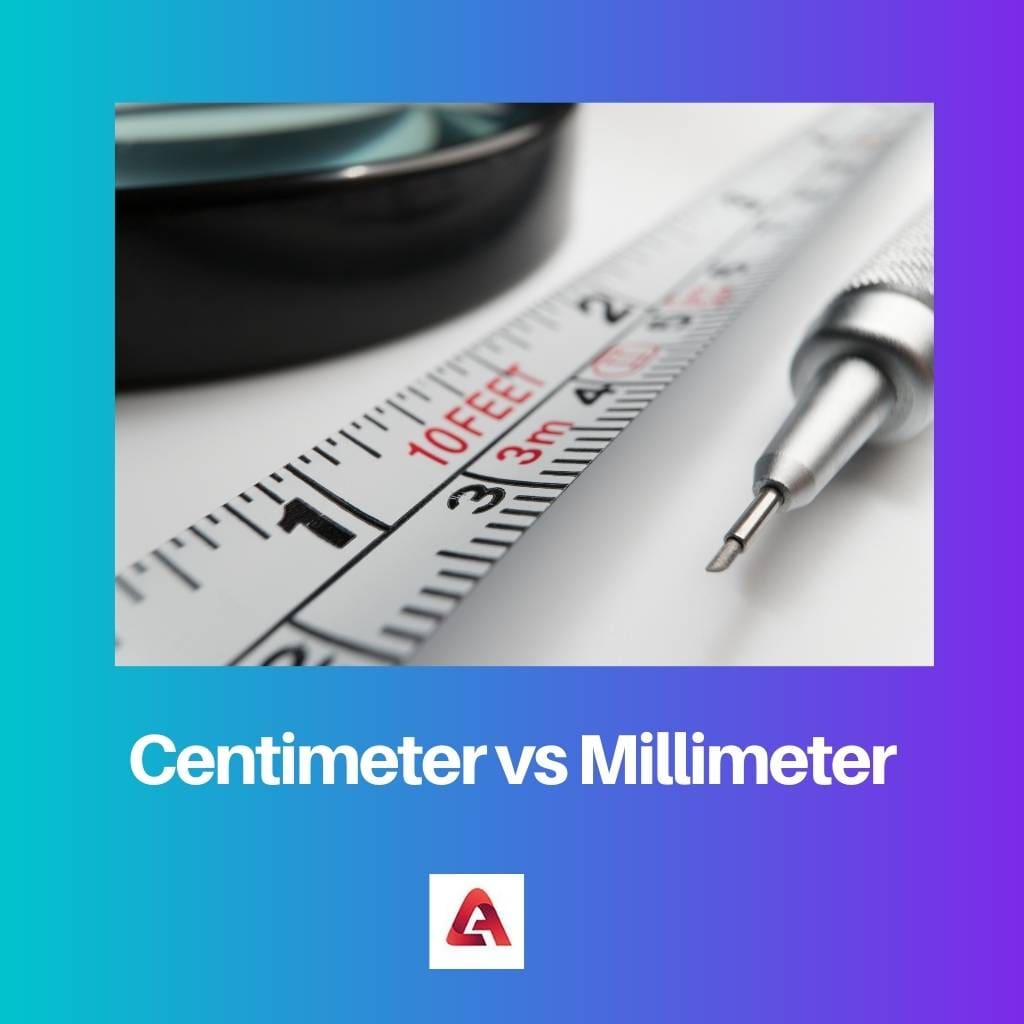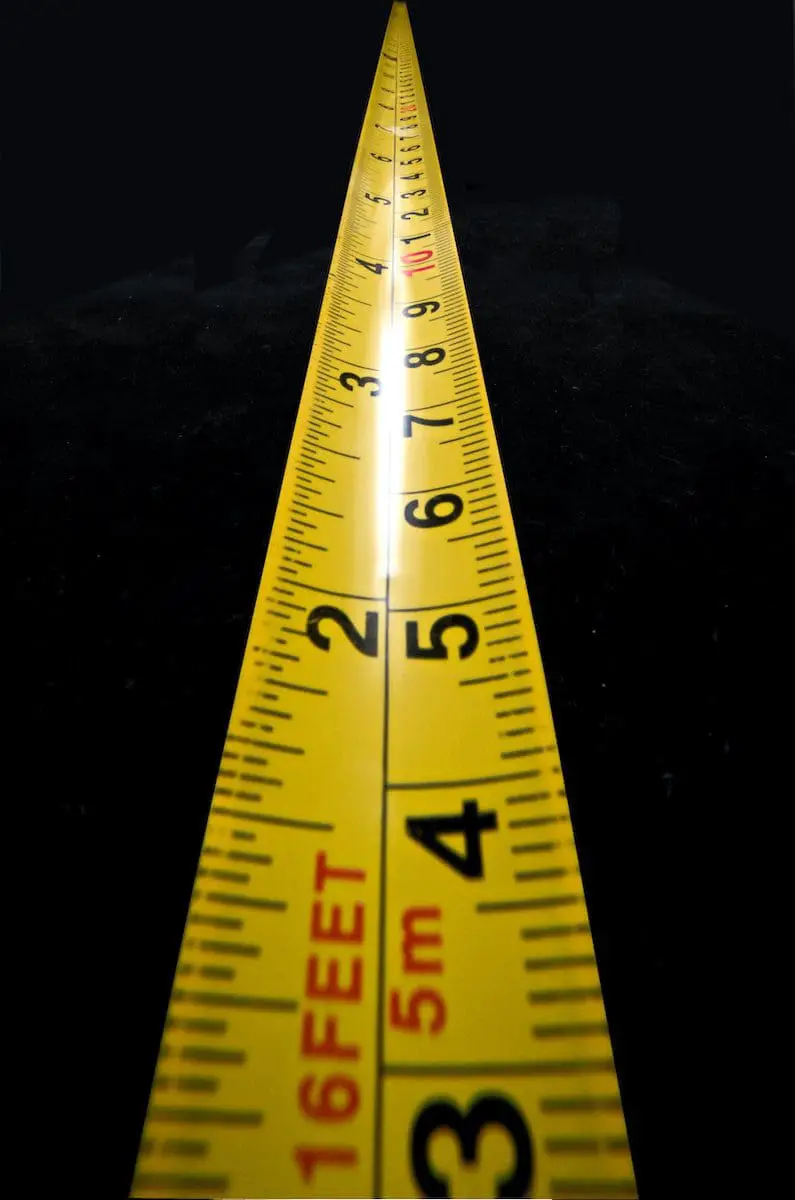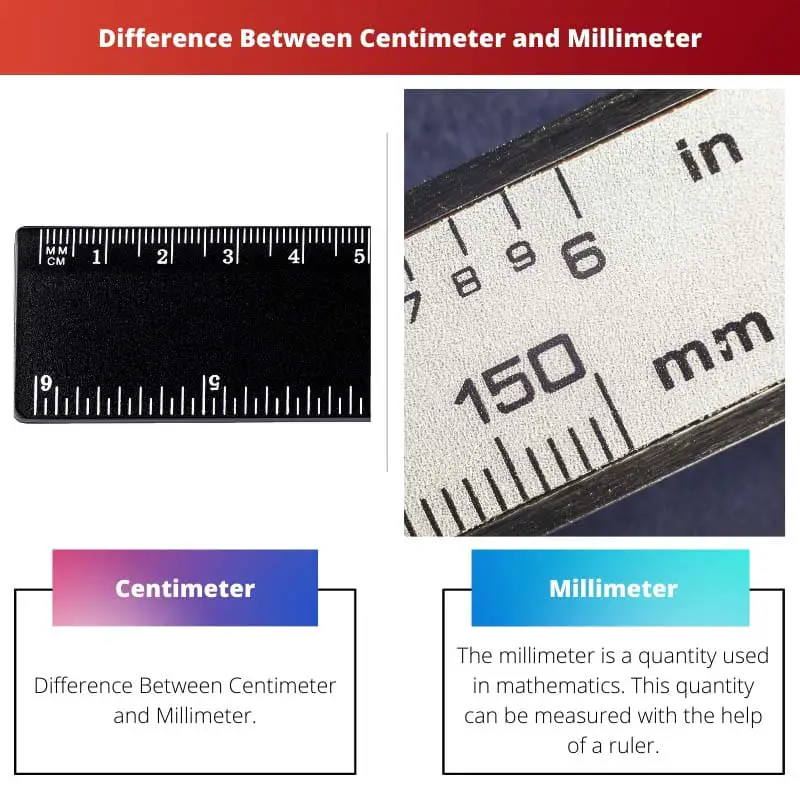Measurements are very important in our life. Whenever we use something, we use it to measure that. For example, if we buy something, we use it to measure that product before buying.
We can measure using both centimetres and millimetres. It is, however, believed that centimetres are far more convenient than measuring the quantities using millimetres, as millimetres are considered to be very small.
Key Takeaways
- A centimeter is a metric unit of length equal to 0.01 meters, while a millimeter is smaller, equal to 0.001 meters.
- Centimeters are more commonly used for measuring medium-sized objects, such as clothing or room dimensions, while millimeters are used for smaller items, like screws or electronic components.
- Both units are part of the metric system and can be easily converted, with 1 centimeter equaling 10 millimeters.
Centimeter vs Millimeter
Millimeter is a unit of length which is equal to one-thousandth of a meter, while a centimetre is a unit of length which is equal to one-hundredth of a meter. Millimeter is used to measure rainfall, while centimetre is used to measure snowfall. Centimetre is ten times larger than a Millimeter.

A centimetre is a term used in mathematics to measure certain quantities. It is mostly used by school students in geometrical problems. We use centimetres to measure our height, and some people use inches to measure as well.
But centimetre is very used to measure heights among students in schools. We can find centimetre quantities in rulers.
The millimetre is a quantity used in mathematics for measuring quantities.
Nowadays, it is not only used in measuring quantities only in mathematics but also for measuring brain tumours as well. It is used for measuring a person’s height only when the height is not rounded off to the correct centimetre value.
It will stand as a decimal value to the height.
Comparison Table
| Parameters of Comparison | Centimeter | Millimeter |
|---|---|---|
| Unit System | Metric | SI derived unit |
| Unit | Length | Length |
| SI Units | 10 mm | No |
| Symbol Used | cm | Mm |
| Measured using | Scale | Scale |
What is Centimeter?
A centimetre is a unit that is most used to measure length. Students will get the hang of it in Maths when they use this in Geometry. In Geometry, they use a scale to take the measurements of centimetres.
If you combine 100 centimetres in one go, then it is called a meter. If you want to measure the centimetre, then the simple way to do it is with the example of a ruler.
The inches that occupy 1 centimetre is 0.3937 inches. On the other hand, the inch, which is equivalent to centimetres, is 2.54 centimetres.
Sometimes people use inches more than centimetres because it will be somewhat easy to measure as centimetres will be very small. If you buy an inch of tape, it will have a centimetre on the backside of the tape. If students want to put a margin on a sheet of paper, they are advised to use a 1-centimetre radius.
By using 1 centimetre as a radius, it will look clean and neat. You can even measure the centimetre of a finger. The maximum that can go would be 9 centimetres. Apart from that, it won’t be that long.
In rulers, you can even measure millimetres and inches as well. But centimetres are mostly used in mathematics and especially in geometry by students.

What is Millimeter?
The millimetre is a quantity used in mathematics. This quantity can be measured with the help of a ruler.
The ruler contains millimetres, centimetres, and inches as well. In the ruler, the smallest line will be used for measuring millimetres. It is very useful in geometry because the centimetre won’t always come in a rounded value.
Sometimes, it might come in a decimal value. In such cases, the measurements will be calculated with the help of millimetres.
The symbol used for measuring millimetres is mm. The symbol is derived from the name itself. They are mostly used for measuring the metric system’s length.
This is not only used in mathematics but also in science as well. In biology, it is used to measure the size of the brain tumour.
Since brain tumours are measured in millimetres because no other calculation will become a precise match for that.
To make an inch, it required at least 25.4 millimetres, and the same will be continued for the rest as well. We can even convert millimetres to centimetres and vice versa. Even millimetres can be calculated in decimals as well.
However, it cannot be used to measure the whole height of a person. But it is used for measuring heights with decimal values.

Main Differences Between Centimeters and Millimeters
- Centimetres are used for measuring a person’s height. On the other hand, millimetres cannot be used for measuring a person’s height.
- The unit system used in the centimetre is Metric. On the other hand, the unit system used in millimetres is SI derived unit.
- The symbol used for measuring centimetres is cm. The symbol used for measuring millimetres is mm.
- The SI unit for measuring centimetres is 10mm. But there is no SI unit for measuring millimetres since it is derived from the SI unit itself.
- The unit used to describe centimetres is length since it is mainly used for measuring the length of an object. Likewise, the unit used to describe millimetres is length since it is used for measuring an object’s length.

- https://ieeexplore.ieee.org/abstract/document/4056636/
- https://ieeexplore.ieee.org/abstract/document/1450053/

This article’s detailed information about the use of centimeters and millimeters has significantly increased my understanding of these units of measurement.
I agree, the comprehensive nature of this article allows readers to grasp the importance of centimeters and millimeters effectively.
The detailed explanations regarding centimeters and millimeters in this article have been instrumental in enhancing my understanding of these units of measurement.
The well-researched content and the informative nature of this article provide valuable clarity on the distinctions between centimeters and millimeters.
The detailed comparison between centimeters and millimeters presented in this article is both informative and enriching. A great read.
This article serves as an excellent source of knowledge, especially in elucidating the differences between centimeters and millimeters.
The high-quality content of this article is evident in its comprehensive coverage of centimeters and millimeters, making it a valuable resource.
I didn’t realize the significance of the difference between centimeters and millimeters until reading this article. It broadened my understanding.
This article was very educational. It’s always refreshing to delve deeper into the intricacies of units of measurement.
This article explained the comparison between centimeters and millimeters really well, helping me enhance my knowledge.
It’s fascinating to learn about the practical applications of centimeters and millimeters, especially in areas like healthcare and mathematics. Great insights!
This article’s thorough analysis of centimeters and millimeters contributes to a better understanding of these units and their uses.
The discussion on the distinctions between centimeters and millimeters was elucidating and enhanced my knowledge in this area.
This article provides a solid foundation for understanding the significance of centimeters and millimeters in various applications, making it a valuable resource.
The depth of information presented in this article offers clarity on the relevance and uses of centimeters and millimeters. Very insightful.
This article served as a great refresher on the use of centimeters and millimeters. It’s always valuable to revisit these fundamental concepts.
The clear explanations provided by this article regarding centimeters and millimeters are commendable. Well-written and insightful.
I found this article to be enlightening, especially the implications of the use of centimeters and millimeters in different areas. Very insightful.
Very interesting article. It’s enlightening to learn more about the detailed use of centimeters and millimeters in our daily lives.
Indeed, this article provided in-depth information about the use of centimeters and millimeters. I’m glad I read it.
I appreciate this article for providing a comprehensive comparison between centimeters and millimeters with real-world applications. Very informative.
This article eloquently describes the significance of centimeters and millimeters in measurements, helping readers comprehend its importance.